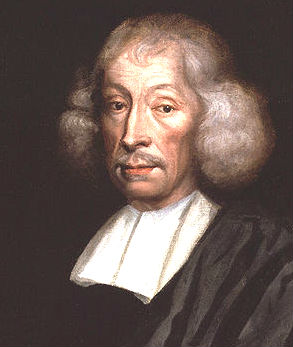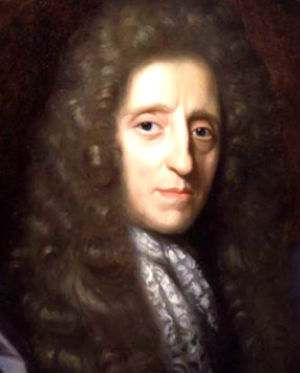On the Origins of New Forms of Life
1.7: The "Essence" Criterion
(Continued from the previous page)
 John Ray
John Ray John Locke
John Locke
John Ray (1627–1705) seems to have been among the first to offer a definition of species intended for naturalists (as opposed to the ancient definition used by logicians). In his Historia Plantarum (1693), Ray states that
Of course, there is an obvious difficulty with his definition. Such a rule would result in a huge number of types being treated as species (many cases are known of two types differing with respect to some extremely minor characteristic and yet breeding true for that trait when they are mated only with other individuals of the same type).
Ray's definition represented an effort to provide a working criterion that would allow the classification of plants and animals according to their "specific essences." However, Ray's contemporary, the philosopher John Locke, roundly rejected the idea that systems of classification could be based on "essences" — though in doing so he constituted a distinct minority. In An Essay Concerning Human Understanding (1690) he tried to show the inadequacies of scholastic doctrine. There he speaks of what was then the
At that time, the term species was applied to all types of things, for example, to the various types of minerals. Locke admitted it is possible to classify things into categories on the basis of their observed characteristics. But, while his contemporaries did call those categories "species," he thought they were mistaken to suppose such categories were distinguished by, and based on, "essences" just because the word species was used to refer to them:
In point of fact, many make the same sort of mistake even today. That is, when they see that a population is treated as a species, they are likely to assume it has the characteristics they personally associate with the name species. For example, they might assume the population does not interbreed with other such populations. Nevertheless, many populations treated as species do in fact interbreed, often extensively, with other populations treated as species (see Section 2.4). So, as Locke points out, thinking in this way can be a great mistake. NEXT PAGE >>
Most shared on Macroevolution.net:
Human Origins: Are we hybrids?
On the Origins of New Forms of Life
Mammalian Hybrids
Cat-rabbit Hybrids: Fact or fiction?
Famous Biologists
Dog-cow Hybrids
Georges Cuvier: A Biography
Prothero: A Rebuttal
Branches of Biology
Dog-fox Hybrids